This is one in a series of posts on the Fujifilm GFX 100S. You should be able to find all the posts about that camera in the Category List on the right sidebar, below the Articles widget. There’s a drop-down menu there that you can use to get to all the posts in this series; just look for “GFX 100S”.
I’ve been involved in discussions about how much sharpness is lost when you put the Fuji 1.4X teleconverter behind the Fuji 250 mm f/4 GFX lens. There are two schools of thought.
- With a perfect converter, you’d see a 28.6% reduction in MTF in cycles/pixel or cycles/picture height in the image field at the sensor. Since the TC isn’t perfect, you’d see more than that.
- The 250/4 is so darn good that the sensor is causing most of the blur, not the lens. so, if you make the image larger with a TC you’ll see less than a 28.6% loss in MTF.
There’s a third school of thought that says maybe the TC is designed to remove the effects of lens aberrations, so you won’t see a 28.6% reduction in MTF even not considering the effect of the sensor.
I’m a fan of the first alternative, but I’ve certainly been wrong before, so I tested.
The scene, with the 250/4 on a GFX 100S and no TC:
Test conditions:
- RRS carbon fiber legs
- C1 head
- Target distance 85 feet
- ISO 100 and 125 (I must have slipped. The ISO hads to get well into the triple digits before it affects these slanted edge results much)
- Electronic shutter
- 2-second self timer
- f/4, f/5.6, and f/8 indicated
- With TC and without
- 1/10, 1/5, 0.4 second with no TC
- 1/5, 0.4, 0.8 second for 350 mm case (with TC)
- Focus bracketing with a step size of 1
- Develop in Lightroom 10.2
- Sharpening amount 0, radius 1, detail 0
- White balance to gray of chart
- Same minor exposure adjustment applied to all images
- Rest of settings at default
- Analyse in Imatest
In the captions to the images that follow, all apertures are indicated apertures, and the focal length is the effective focal length. To get he working f-stop, make the f-stop for the 350 mm images one stop narrower. To make it more confusing, the f-stops in the EXIF fields and therefore in the Imatest charts are effective f-stops.


MTF50 has gone from 0.194 cy/px to 0.109 cy/px. That’s a loss of 44%, which is greater than the perfect converter on perfect sensor case.
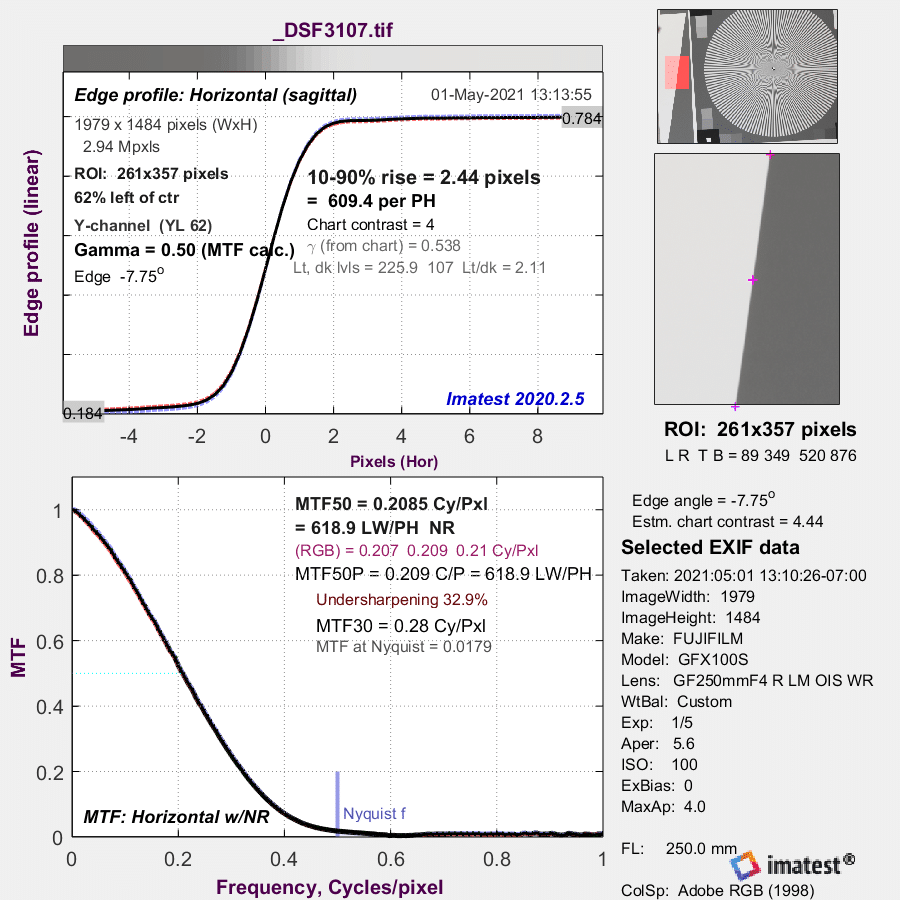
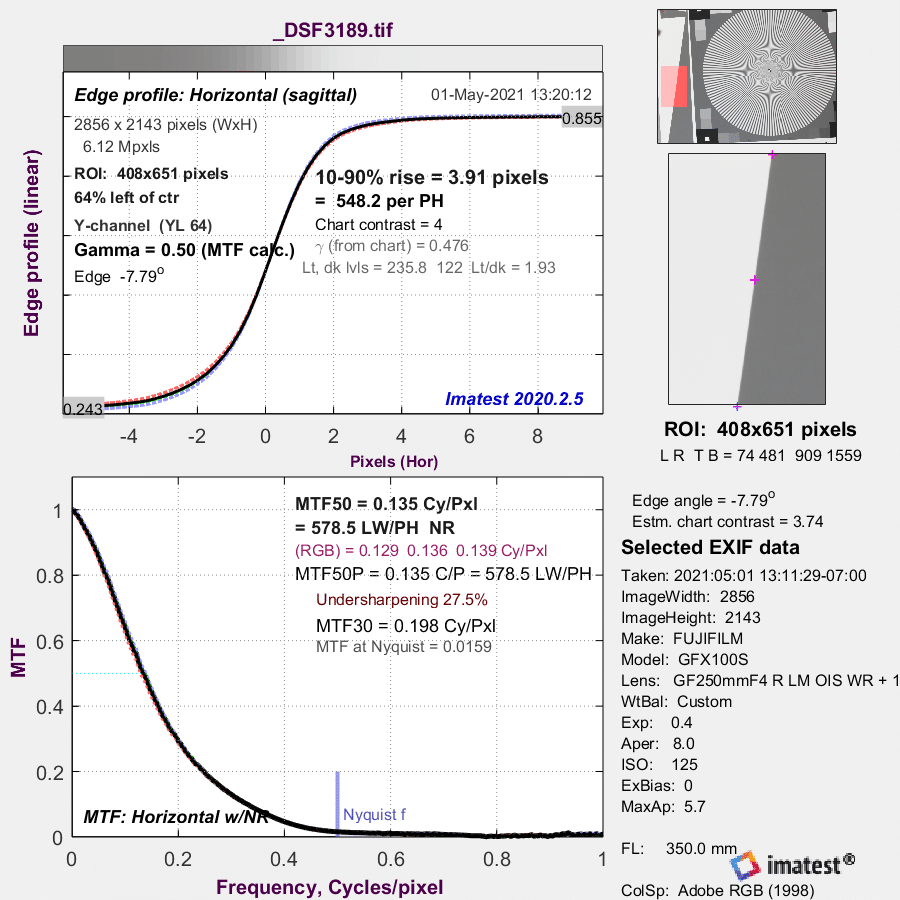
MTF50 has gone from 0.208 cy/px to 0.135 cy/px. That’s a loss of 35%, which is greater than the perfect converter on perfect sensor case.
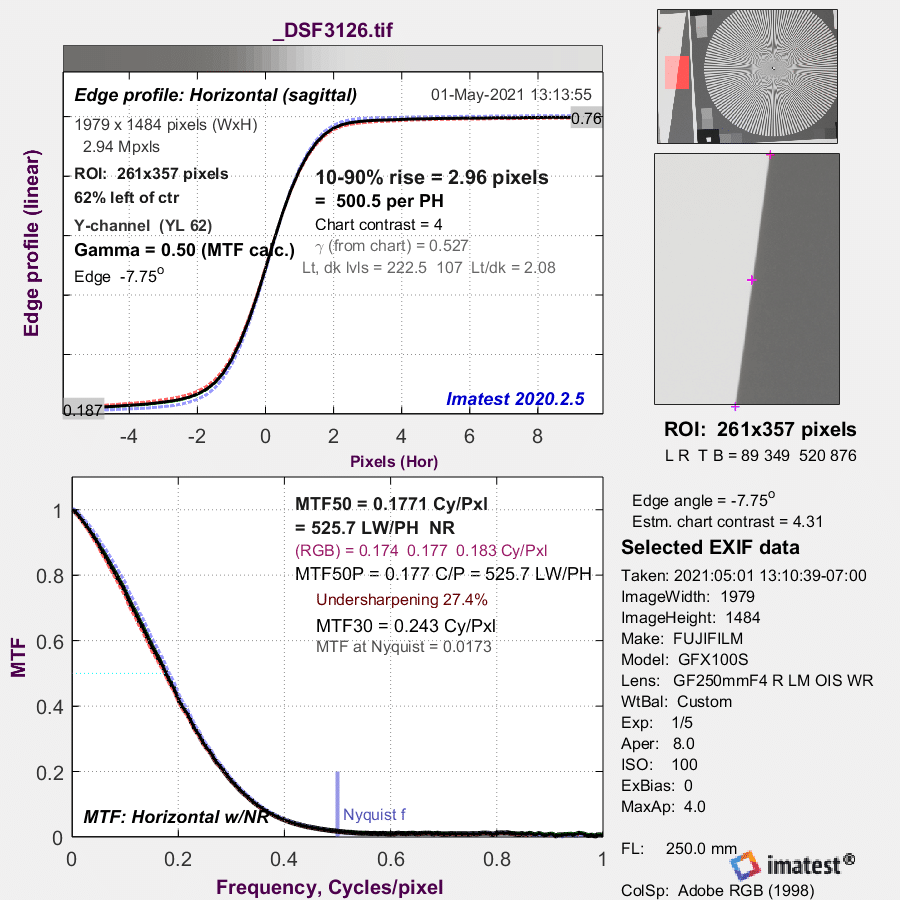
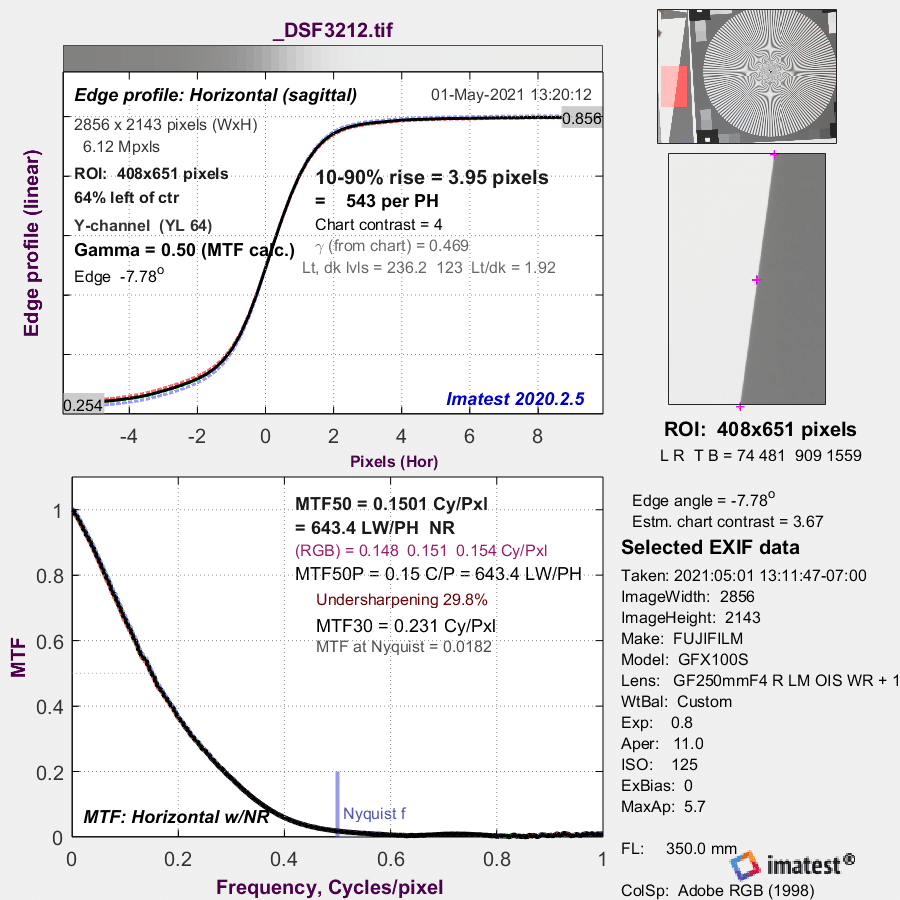
MTF50 has gone from 0.177 cy/px to 0.150 cy/px. That’s a loss of 15%, which is less than the perfect converter on perfect sensor case.
In this case, both main schools of thought get to be right part of the time, and wrong part of the time.
While we’re at it, let’s look at chromatic aberration.


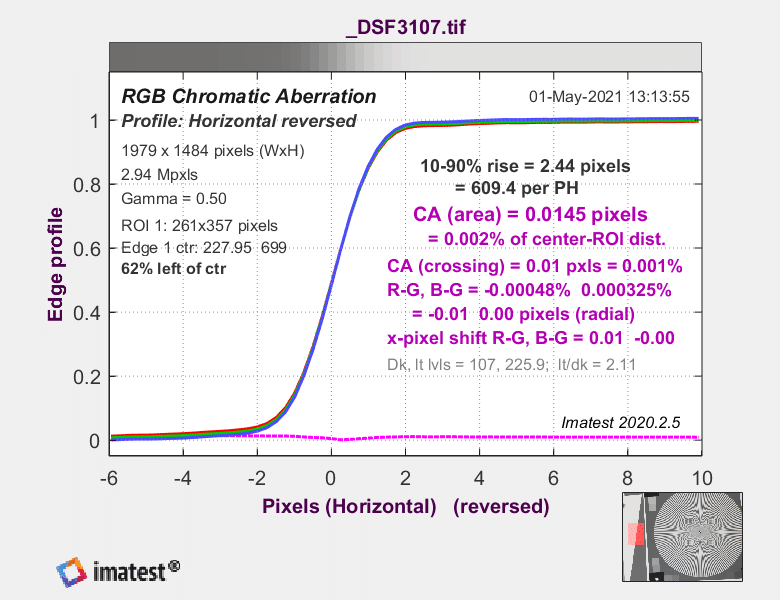

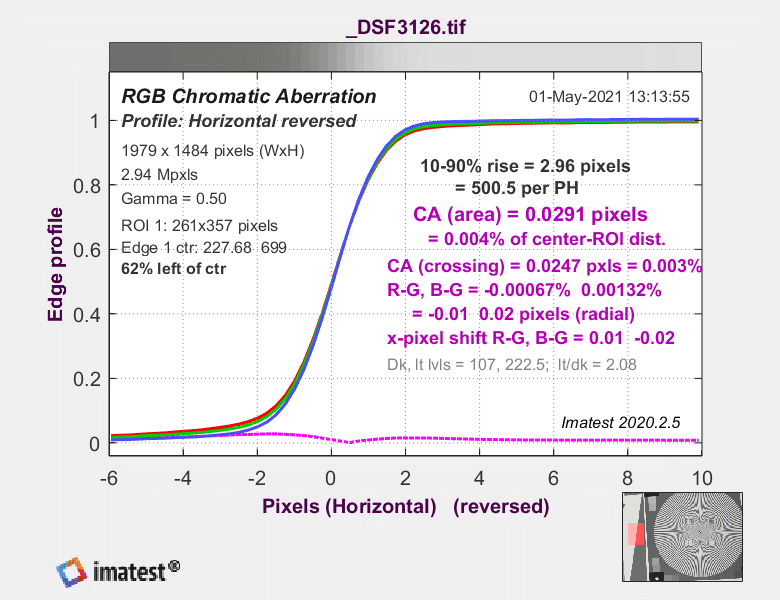
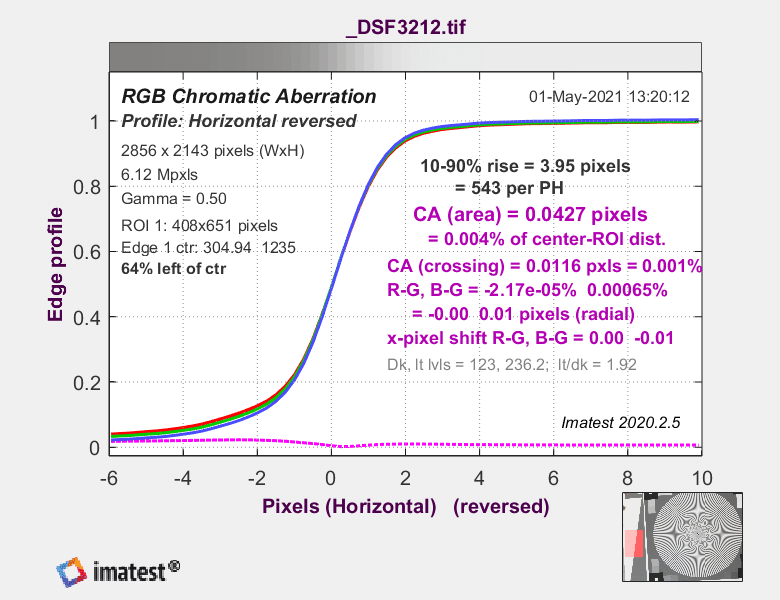
In all cases, chromatic aberration is quite low.

Erik Kaffehr says
I would have expected to see higher MTF 50 values for the GF 250/4 with no extender.
Some thought?
JimK says
Given the lens’s reputation, I would have expected better results, too.
Erik Kaffehr says
Hi Jim,
It would be interesting to see how things work out with your Nikon zoom 180-400/4 with it’s built in tele converter.
BTW, nice to see you posting again on The Last Word.
Best regards
Erik
JimK says
It’s more difficult to conduct that experiment with the GFX 100S, since focus bracketing doesn’t work with that lens. I could run a test on the Z7.